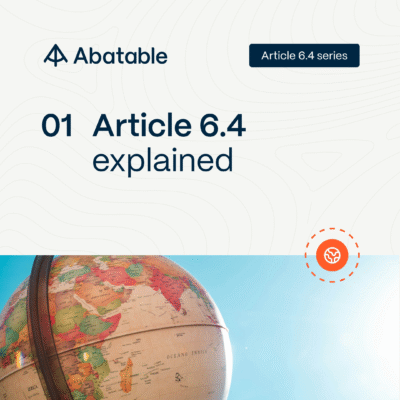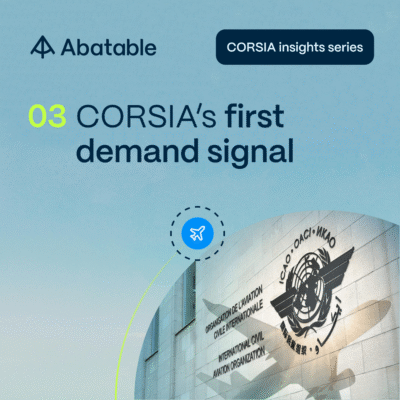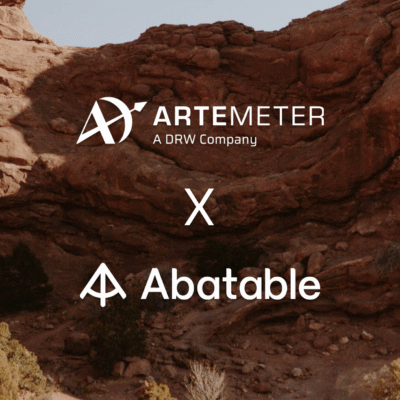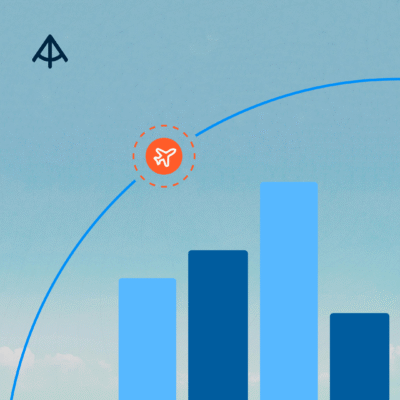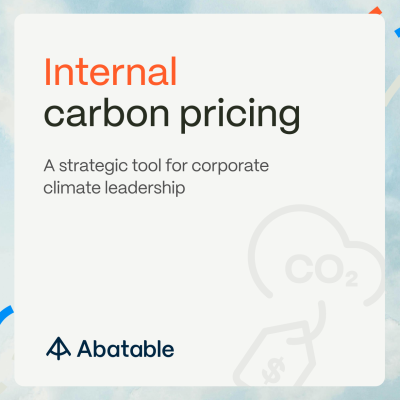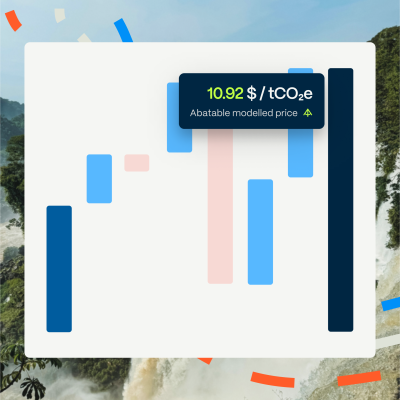Growing consensus exists among both governments and businesses on the fundamental role of carbon prices in the transition to a decarbonised economy. Carbon prices play an important role in that they assign an explicit price on greenhouse gas emissions, measured in one tonne of carbon dioxide equivalent (or tCO2e).
A carbon price provides an economic signal to emitters. A higher price can be effective in reducing emissions by making low- or zero-carbon energy alternatives cheaper compared to high-carbon alternatives, especially in cases where high-carbon alternatives appropriately price in the cost of negative externalities linked to the GHG emissions they generate.
There are multiple carbon pricing initiatives globally – spanning from the government carbon tax schemes, corporations’ use of internal cost of carbon thresholds in decision making, carbon cost abatement curves, as well as more traditional market-based carbon markets.
In this article, we only focus on market-based carbon pricing initiatives with the hope to be covering more comprehensively this topic in a future article. This article also provides some transparency on where the Abatable team sees current voluntary carbon prices across different project types.
For a breakdown of the factors that influence the price of a carbon credit checkout our article “Understanding carbon credit pricing“.
Carbon credits prices in the compliance and voluntary markets
There are two main market-based carbon pricing initiatives. Those are: 1) an emission trading scheme or ETS, or 2) the voluntary carbon market. Those initiatives differ substantially in how demand and supply are designed to interact, and how carbon prices can evolve over time.
These two initiatives are explained below:
- Emission trading schemes or ETS, like the European Union ETS, are designed as closed trading schemes where emitters are mandated to participate. Emitters are typically allocated a set number of carbon allowances on day 1 (either for free or through an auction) and they are then invited to trade surplus and deficit of carbon allowances up to a total cap every year. The total number of allowances allocated is by design capped and decreasing in a way that allows carbon price to go up and incentivizes alternative decarbonization paths. European Union Allowances (or EUAs) are now trading at close to 70-80 EUR per tonne of CO2e, up from closer to 20 EUR in the beginning of 2020.
- On the contrary, voluntary carbon markets allow organisations to purchase carbon credits purely on a voluntary basis. In this market, supply and demand are not constrained by design. Supply can, in theory, grow unlimited, however current market developments suggest that supply of carbon credits is not able to grow as fast as demand in the short-term, which may lead to price of carbon within voluntary markets to increase. Little transparency is currently available on the price of carbon credits, as most transactions still occur on over-the-counter (OTC) markets, meaning those occur bilaterally between corporate buyers, developers and/or intermediaries.
Carbon credits prices per project type
Prices of different carbon credits in the market vary widely based on the project type and multitude of other factors. A summary table is provided below summarising key pricing information in this market.
Sign up to our platform to get the most up-to-date pricing data per project type.
Source: Abatable. Data as of August 2022. References to minimum, median and maximum carbon prices are illustrative only and reflect indicative prices observed by the Abatable team during the procurement activities on behalf of its clients. Reference benchmarks provided by CBL Xpansiv, S&P Platts, CME, Allied Offsets have also been considered, as well as prices from other carbon offsetting marketplaces monitored by Abatable. Prices are based on estimates and are not representative of past or future performance.
The wide variability in carbon credits prices within the voluntary carbon market (VCM) could be explained by different factors, in particular:
- Project type considerations: Not all projects are created equal. Given the difference in development costs for different project types (i.e. the development cost of 1tCO2e from developing a cookstove program may be very different than that of certifying 1tCO2e from tree planting activities), carbon project developers may be willing to sell carbon credits above different breakeven levels.
- Vintages: Carbon credits with older vintages are commonly valued lower on the market right now. However, this rationale is highly debated (see here or here).
- Removals vs avoidance: Credits tied to projects which have the potential to sequester carbon (removal credits) are currently available in structural under-supply relative to avoidance carbon credits, hence removal credits often command a premium relative to avoidance credits.
- SDGs credentials: Projects which have additional social and environmental certifications like the CCB or SDVista certifications command a premium, reflecting the value that buyers assign to ecosystem benefits of the project beyond the carbon element, as well as communicative leverage they are able to extract by being affiliated to the positive social and environmental impacts generated by the project.
- Developer quality and reputation. Credits from a reputable organisation with strong impact ethos and large distribution resources may command a higher price.
- Region/country: Some credits located in developed economies may command a premium reflecting corporates’ preference to back projects closer to their business operations. Additionally, the interaction between the voluntary and compliance markets in some countries like the United States may drive a level of price convergence which may not be possible in other regions.
- Wholesale vs retail prices: Wholesale prices reflect almost real-time reference carbon prices quoted on voluntary carbon market exchanges and platforms (as for example CBL Xpansiv, AirCarbon exchange) and used by banks, large corporations and institutions for large volume transactions (approx. 5,000+ tCO2e). Retail prices of carbon credits on the VCM are referred to when dealing with smaller transactions, less frequently updated, and are often prices quoted on carbon marketplaces.
- Volume: This market sees developers or intermediaries willing to concede on discounted prices for higher volumes purchased or contracted.
Increasing the transparency of the carbon credits prices
Given the complexity of how the voluntary carbon market operates, there still remains a lot of opacity in how carbon prices are set. As participants in this market, we have observed that most of the prices are set by intermediaries which often charge a large mark-up relative to their entry price at acquisition. Some articles have highlighted the hefty intermediary margins, which have been pocketed by some intermediaries at the expense of developers or communities involved in the project (see recent FT article titled “Surge of investment into carbon credits creates boom time for brokers”).
As Abatable, our go-forward model is focused on working with developers and impact investors in carbon projects for them to sell their carbon credits directly to corporate buyers. We try to focus on impact investors which have revenue split share agreements with developers and allow developers to benefit directly from price increases on their carbon credits. Abatable’s compensation is transparently charged to corporate buyers, with no cost to the developer or impact investor for working with Abatable. Corporates benefit directly from Abatable’s identification of high quality developers, as well as are able to access our quality assessment to better inform their carbon procurement decisions.
Visit our carbon sourcing page to learn more about the carbon projects we support and request access to our platform.

